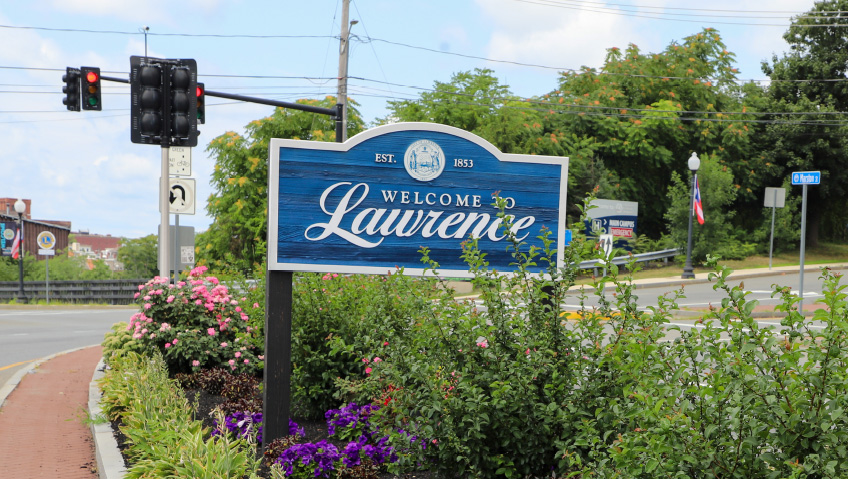In Chisago County, Minnesota growth and development is done by design, and thanks to a countywide strategy, great efforts are being taken to collectively leverage the strengths and the growth potential of its cities, townships, and school districts to make the area a vibrant, prosperous, overall great place to be.
At the heart of these efforts, the Chisago County HRA-EDA is working to preserve the small town feel and a quality of life that is revered by residents, while promoting targeted growth to further enrich the lives of the people and the vitality of the businesses that call the area home.
“Our main focus is bringing jobs, infrastructure and tax base to Chisago County,” says Chisago County HRA-EDA Chairman Jim Stein. “We do that through supporting the businesses we already have here so they can expand and thrive. We always have our eyes open for new businesses whether they are startups or coming from somewhere else. We’re doing what we can to make sure that we have a good business climate where people can be successful.”
Chisago County has taken stock of the needs of the business community and its residents, conducting studies, surveys, and strategic planning sessions. As board member Cathy Bennett says, the council is doing all it can to “methodologically identify the priorities.”
Executive Director of the organization, Nancy Hoffman, elaborates. “One of the strategic directions is countywide growth strategy and working collaboratively and even better together. We’re in a high growth area and we want to make sure that we grow in a planned growth pattern.”
A targeted marketing plan was developed which focused on which businesses or industries would best suit Chisago County. The findings showed that the area is ideal for sustainable energy companies and supply chain operations that would support existing industry, such as wholesale and distribution, and which could take advantage of the access to I-35, the short line rail in the county, and the room to grow.
“Chisago County is certainly a diverse county,” says Stein. “We have I-35 running up our west side, so past economic development has been along the freeway. When we reach out to existing businesses to see how they can expand and be successful, that’s where a lot of them are.”
According to Hoffman, “We’re focusing on our rail a little more now because we do have two business parks on the rail, one in Rush City and one in North Branch. We also have three privately owned sites available on the rail. One of the reasons we’re focusing on warehouse and distribution is because we feel we have some really good sites for that.” Hoffman points out that, in addition, the necessary infrastructure to support it already exists.
“Right on I-35 to the east,” Hoffman continues, “we have four cities that have industrial parks and we’ve seen quite a bit of movement there, recently.” Land has been sold and spec buildings will be developed in Wyoming that are proving attractive to prospective investors. But, as it often goes, everyone’s lips are sealed until the deals are done.
There is also activity in Stacy, which is a small community that has one recently completed industrial building and two other buildings underway. This will offer the county much needed inventory from a commercial industrial standpoint.
The largest industrial park in the county is located in North Branch, offering over 200 acres of land. Recently a new 15,000 square foot building was added to the park. Working with the City, Chisago County applied for “Opportunity Zone” designation. “We have teamed up with an investor to put up a building for a specific business making use of the Opportunity Zone designation,” says Hoffman.
It’s not just about attracting new investments to the county, either. In fact, a number of existing businesses are expanding in Chisago County including Rosenbauer, the largest fire truck-apparatus and emergency response-vehicle manufacturer in the world. Rosenbauer has increased its physical footprint by 100,000 square feet.
Likewise, Kendall Howard, manufacturer of metal tables, carts, racks, cabinets, shelves, and accessories for IT needs, is expanding by 25,000 square feet. In Rush City, Dennis Kirk, a distribution center for parts and apparel for powersports is looking at a 100,000 square foot expansion.
Additional efforts are being made to partner with the State of Minnesota to enhance Highway 8 which will further reinforce the economic strength of the county, as well as improve resident safety and connectivity, especially since there are commuters in the area.
Data from the Department of Economic Development indicated that 68 percent of residents leave for work each day, though that figure is trending downwards with COVID and the growth of jobs in the county.
Bennett has noted that wages in Chisago County are 38 percent lower on average than in the metropolitan area, and that many residents travel out of the county each day to their jobs. The next step is the issuance of an RFP for a labor assessment to get a better understanding of these trends.
“The reasons they leave are usually higher pay, or that we don’t have the type of business here that they’d like to work in. So those are the types of businesses that we want to attract to the county, so people can work closer to home and shop closer to home, and volunteer, spend less time in the car, that sort of thing,” says Hoffman.
One of the ways this is being achieved is by investing in the area’s connectivity, which has been a priority of the Chisago County HRA-EDA for many years but became even more important as COVID forced people to work from home.
Chisago County participated in the Blandin Broadband Communities Program which helped it garner an investment of more than $5.5 million by the MN Border to Border Broadband Grant Program and an additional $4.5 million from the provider, as well as contributions from the townships – dedicated to bringing fiber to homes in several communities.
“It’s a very helpful program to go through,” says Hoffman. “We really learned which areas were lacking with broadband and we were actually successful in bringing three border-to-border broadband projects in our county for three different townships.”
Efforts to expand broadband services continue, so as to ensure the infrastructure is in place to support the growth of jobs and investment in the county, and further grow the relationships the county enjoys with local providers. Chisago Lakes is the next area of focus, as well as others that are interested in seeking support for broadband development.
In addition to the help from Blandin Foundation, other development partners in Chisago County include the providers, cities, townships, school districts, Chamber of Commerce, and other organizations like the Initiative Foundation and East Central Regional Development Commission.
According to Hoffman, “We have quite a few school expansions in the Chisago Lakes area and a number of new buildings including a community center and amenities attached. North Branch had expansions of beautiful facilities and has very highly rated schools as well.”
Together with its partners, the Chisago County HRA-EDA is making Chisago County a community and an economy to be watched, as they work collectively to identify gaps in services and infrastructure. Their goal is to deliver a well-rounded value proposition to those who are looking to live, work or invest in the area, but especially those who already live in Chisago County.
According to Bennett, “The studies indicated that there were income disparities between owners and renters and that there was a significantly low supply of rental units with very low vacancy. The study also indicated that there was demand for 3,600 housing units, with a lot of them senior units, by 2030.”
Currently, Chisago County HRA-EDA owns six housing developments that mostly target seniors and low-income earners, but there are no vacancies, and demand still exists. With 90 percent senior occupancy, there is a need to expand affordable housing in the area.
“We felt that the existing HRA-owned housing units certainly serve a critical need for the county but they’re not addressing the workforce housing needs, whether for owned or rented units,” says Bennett.
Bennett explains that one of the challenges Chisago County faces is that because of the increase in construction material costs and the shortage of skilled labor, it’s difficult to meet the demand for affordable housing, affordably.
She noted, “One of our hopes is that we find opportunities and assist developers build new housing options in the county and provide the cities and developers with the different resources that might be available, as well as giving them access to land area and zoning for each city to make it easier.” She includes the new HRA – EDA local housing trust fund that was created to generate additional interest in the area. The program provides grants or low interest loans for low to moderate income housing developments.
“That’s why we’re all here: we love the outdoors, the recreation, the small-town feel, but yet we know we need more growth to provide more and better jobs and, as well, be able to shop and have the types of businesses we want around us,” says Hoffman.
And here we have it – the driving force behind the efforts of Chisago County to enrich the quality of life and economic potential of the region by design.






